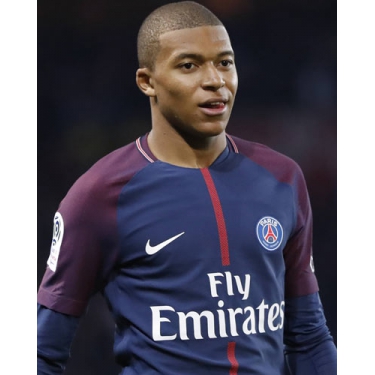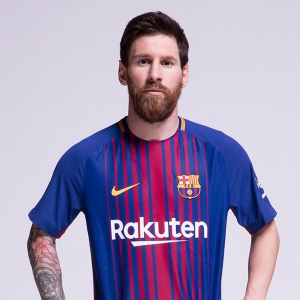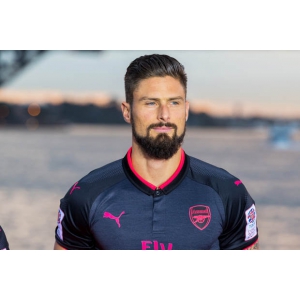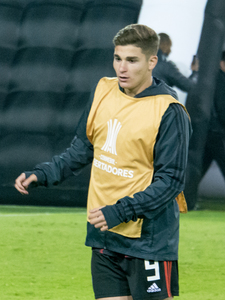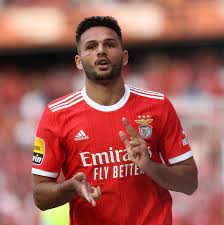In the sport of association football, each of the 11 football players on a team is assigned to a particular position on the field of play. A team is made up of one goalkeeper and ten outfield players who fill various defensive, Midfielderl, and Forward depending on the formation deployed. These positions describe both the player's main role and their area of operation on the pitch.
In the early development of the game, formations were much more offensively aggressive, with the 1–2–7 being prominent in the late 1800s. In the latter part of the 19th century, the 2–3–5 formation became widely used and the position names became more refined to reflect this. In defence, there were full-backs, known as the left-back and right-back; in midfield, left-half, centre-half and right-half; and for the forward line there were outside-left (or left wing), inside-left, centre-forward, inside-right and outside-right (or right wing). As the game has evolved, tactics and team formations have changed and so many of the names of the positions have changed to reflect their duties in the modern game (though some old familiar ones remain). The term "half-back" fell out of use by the early 1970s and "midfield" was used in naming the positions that play around the middle third as in centre midfield and wide midfield.
There are 4 main football positions
1.Goalkeeper
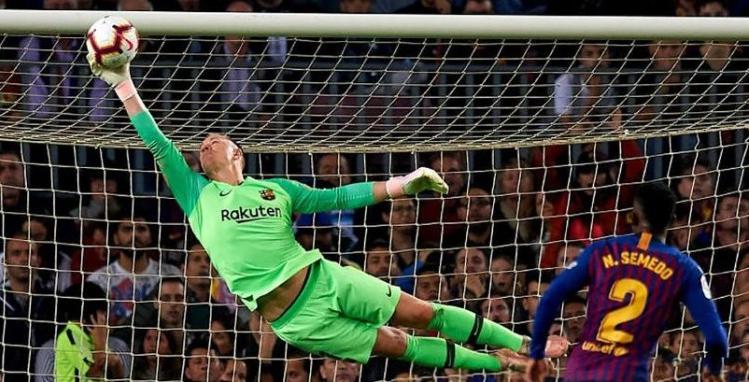
Goalkeeper is the most defensive position in football. The goalkeeper's main job is to stop the other team from scoring by catching, palming or punching the ball from shots, headers and crosses. Unlike their teammates, goalkeepers typically remain in and around their own penalty area for most of the game. As a result, goalkeepers have a better view of the pitch and often give advice to their defence when the other team is on the attack or during set pieces. Goalkeepers are the only players on the pitch who are allowed to handle the ball, but this is restricted to their own penalty area. Positioning is another important job and is one of the hardest to master as keeper.
Goalkeepers must also wear a different coloured kit from the outfielders and officials. Common colours include yellow, green, grey, black and shades of blue. Since the 1970s, goalkeepers have also typically worn specialised gloves. They provide better grip on the ball and protect their hands from hard shots and headers, as well making it easier to punch or push the ball away. Caps were common between the 1910s and 1960s, as well as woolly jumpers, but these are not worn in any professional or semi-professional context today.
Unlike the other positions the goalkeeper is the only required role in a football match. If a goalkeeper gets sent off or injured another goalkeeper must take their place in goal. If that is not possible an outfielder must do so and wear the goalkeeper's shirt.
2.Defender
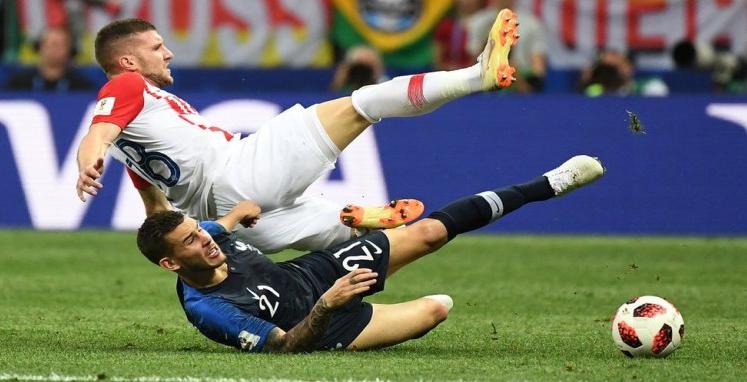
Defenders play behind the midfielders and their primary responsibility is to provide support to the team and to prevent the opposition from scoring a goal. They usually remain in the half of the field that contains the goal they are defending. Taller defenders will move forward to the opposing team's penalty box when their team takes corner kicks or free kicks, where scoring with one's head is a possibility
Centre-back
The principal role of the centre-back,](or central defender) (historically called a centre-half) is to block the opponent's players from scoring, and safely clearing the ball from the defensive half's penalty area. As their name suggests, they play in a central position. Most teams employ two centre-backs, stationed in front of the goalkeeper. There are two main defensive strategies used by centre-backs: the zonal defence, where each centre-back covers a specific area of the pitch, and man-to-man marking, where each centre-back has the job of covering a particular opposition player
Sweeper
The sweeper (or libero (Italian: free)) is a more versatile type of centre-back that, as the name suggests, "sweeps up" the ball if the opponent manages to breach the defensive line. Their position is rather more fluid than other defenders who mark their designated opponents. The sweeper's ability to read the game is even more vital than for a centre-back. The catenaccio system of play, used in Italian football in the 1960s, notably employed a defensive libero.With the advent of the modern offside rule came the need to hold more of a defensive line to catch opposing players offside. Use of a sweeper role became less popular as the last man can play an attacking opponent onside, which could in the case of the sweeper be behind the main defence.
Full-back
The left-back and the right-back (generally referred to as the full-backs) are the defenders stationed at either side of the centre-backs to provide protection from attacking wide players. They often have to defend against the opponent's wingers, who will try to take the ball past them down the flanks in order to cross or pass into the penalty area to their attackers. Full-backs traditionally do not go up to support the attack but may move up as far as the halfway line depending on the defensive line being held. In the modern game, there has been the tendency to prefer the use of the attacking full-back (wing-back) role though they are more often than not still referred to as right- or left-backs.
3.Midfielder
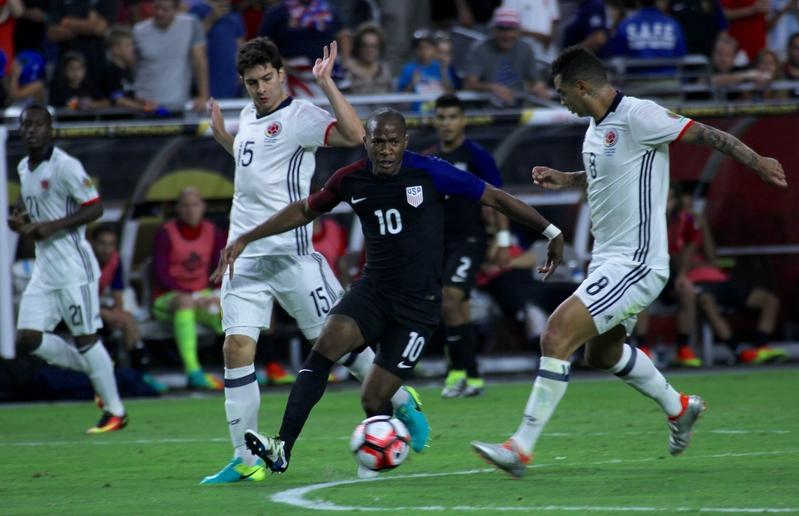
Midfielders (originally called half-backs) are players whose position of play is midway between the attacking forwards and the defenders. Their main duties are to maintain possession of the ball, taking the ball from defenders and feeding it to the strikers, as well as dispossessing opposing players. Most managers field at least one central midfielder with a marked task of breaking up opposition's attacks while the rest are more adept to creating goals or have equal responsibilities between attack and defence. Midfielders can be expected to cover many areas of a pitch, as at times they can be called back into defence or required to attack with the strikers. They are more often the players that initiate attacking play for a team.
4.Forward
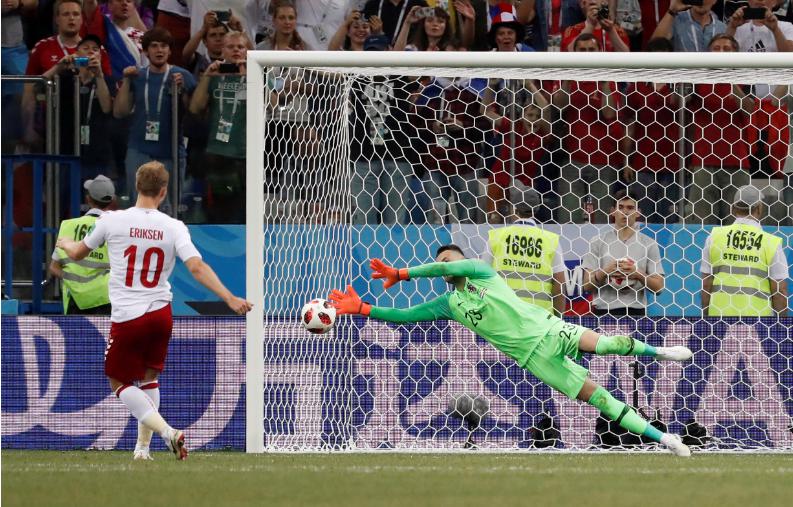
Forwards (or strikers) are players who are positioned nearest to the opposing team's goal. The primary responsibility of forwards is to score goals and to create scoring chances for other players. Forwards may also contribute defensively by harrying opposition defenders and goalkeepers whilst not in possession. The most common modern formations include between one and three forwards; for example, a lone striker in a 4–2–3–1, paired strikers in a 4–4–2 or a striker and two wingers in a 4–3–3.
Coaches will often field one striker who plays on the shoulder of the last opposing defender and another attacking forward who plays somewhat deeper and assists in creating goals as well as scoring. The former is sometimes a large striker, typically known as a "target man", who is used either to distract opposing defenders to help teammates score, or to score himself; the latter is usually of quicker pace, and is required to have some abilities like finding holes in the opposing defence and, sometimes, dribbling. In other cases, strikers will operate on the wings of the field and work their way goalwards. Yet another variation is the replacement of the target man with a striker who can thread through-balls.
Players who specialise in playing as a target are usually of above-average height with good heading ability and an accurate shot. They tend to be the "outlet" player for both midfielders and defenders, able to "hold the ball up" (retain possession of the ball in an advanced position while teammates run forward to join the attack). They tend to score goals from crosses, often with the head, and can use their body strength to shield the ball while turning to score.
It can be concluded that to know that in footballthere must be 11 players, all 11 players consist of Goalkeeper, defenders, midfielders and forwards, what roles these positions play and how they play an important role in the team. playing of football with a code that forms a plan and determines how many players should have per position except the goalkeeper who has only 1 person I hope that the articles that have been written will be knowledgeable for those who are interested in football and different rules. If you want to find more information, you can find it in Google Chrome and Internet Explorer.
reference
Association football positions.position of football players.[Online].Accessible https://en.wikipedia.org/wiki/Association_football_positions
Defender (association football).position of football players.[Online].Accessible https://en.wikipedia.org/wiki/Defender_(association_football)
Forward (association football).position of football players.[Online].Accessible https://en.wikipedia.org/wiki/Forward_(association_football)



